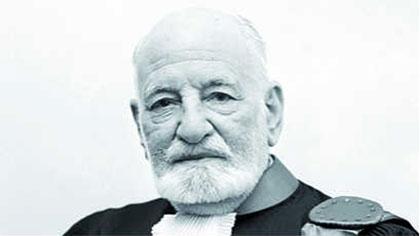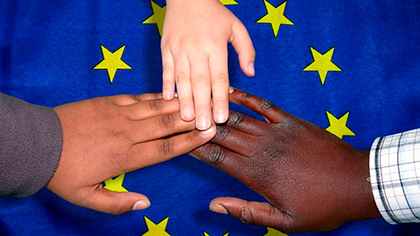Asset Publisher

René Cassin, symbol of the Europe of human rights
European Convention on Human Rights – November 1950
Guido RAIMONDI

As with all my predecessors for over half a century, it is for me a great honour and responsibility to be a successor to René Cassin as President of the European Court of Human Rights. As I was not fortunate enough to have known him personally, I will not presume to talk about his life, but his career and struggles have given me a number of thoughts I would like to share, as I myself prepare to leave the Human Rights Building, the home of the Court which represents the last resort for the 830 million potential court users living in Europe.
The Court is the “home” of René Cassin, who was its President from 1965 to 1968. Not only because those who walk along the corridor leading to the President’s office do so under his compassionate gaze, but also because this Court is his dream come true, and is something he fought for all his life. It is also because the Court continues to keep alive his humanistic message.
His life was exceptional in many respects but it was a life not exclusively made up of happy events. He was deeply committed to peace, but lived through two atrocious wars in his lifetime. In each of these world tragedies he played a major role.
It would be wrong to think of René Cassin as a “saviour”. His rare forays into politics were not particularly successful, but he was the right man for the task.
He was the right man for the task, firstly, at the end of the First World War as the driving force behind reconciliation between the two sides. His idea of bringing French and German war veterans together was, at that time, totally revolutionary. Unfortunately, it took another even more devastating war to bring about this miraculous and necessary Franco-German reconciliation, of which Strasbourg, the European capital, was both the embodiment and the symbol.
Even if few remember, it was under the auspices of the International Labour Organization (ILO) that, on 2 September 1921, a conference began of which he was the instigator and which was one of the first illustrations of pacifism after the First World War. On a more personal level, having spent several happy years at the ILO, I see this as an additional reason to feel close to René Cassin. We all know that this organisation’s role was crucial as its Director, Albert Thomas, had the same vision of peace and reconciliation as René Cassin.
Clearly, he also showed what he was made of in London where he was among the first to join General de Gaulle. He had no doubt at all that this was the right thing to do. We should not forget that René Cassin was a republican and a great patriot. But he considered himself not only French but also universalist. He was first and foremost convinced that France could play a role in improving the human condition. In his view, this was a role that France should play in an international organisation and in the context of solidarity between nations. I am certain that, if he were still with us today, he would continue to convey this message.
He was the right man for the task, after the Second World War, at the helm of the French Conseil d’Etat, which he reorganised and to which he gave fresh impetus, following the darkest hours of the Vichy regime, during which many judges had brought disgrace upon themselves by serving this government.
However, it was first and foremost as an architect of an international legal system that he accomplished his life’s work. Because he was profoundly French, everything stemmed from the 1789 Declaration of the Rights of Man and of the Citizen, and from the fact that it permanently established the idea that all human beings are born free and with equal rights. Transposing the declaration into the international system was one of his life’s goals.
If you wish to continue your reading, you may buy the book "Europe: a human enterprise".
Guido RAIMONDI
Born in Naples (Italy) in 1953, Guido became a member of the Italian judiciary in 1977. He worked in the lower courts in the first part of his career, before joining the Legal Department of the Ministry of Foreign Affairs in 1986. From 1989 to 1997 he was Co-Agent of the Italian Government before the European Court of Human Rights. In May 2003 he joined the International Labour Organization (ILO) as Deputy Legal, Adviser and then Legal Adviser up from 2008, a post he occupied until he took up his seat in Strasbourg as a judge at the European Court of Human Rights in May 2010. He was elected President of the Court in November 2015. Both mandates expired in 2019. He is the author of numerous publications in the field of international law, particularly human rights.




